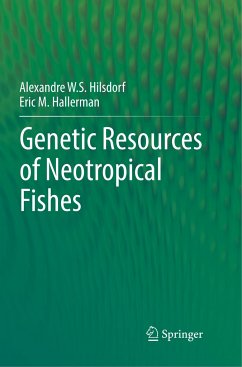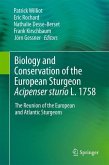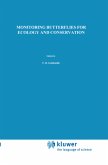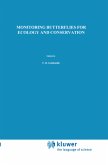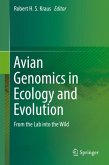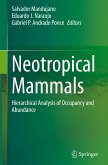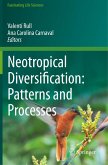- Broschiertes Buch
- Merkliste
- Auf die Merkliste
- Bewerten Bewerten
- Teilen
- Produkt teilen
- Produkterinnerung
- Produkterinnerung
The aim of this book is to systematize and discuss population genetic studies of freshwater fish in a region that harbors the greatest diversity of species among all inland water ecosystems. This volume explores the genetic evaluation for a number of orders, families and species of Neotropical fishes, and provides an overview on genetic resources and diversity and their relationships with fish domestication, breeding, and food production.
Andere Kunden interessierten sich auch für
![Biology and Conservation of the European Sturgeon Acipenser sturio L. 1758 Biology and Conservation of the European Sturgeon Acipenser sturio L. 1758]() Biology and Conservation of the European Sturgeon Acipenser sturio L. 1758155,99 €
Biology and Conservation of the European Sturgeon Acipenser sturio L. 1758155,99 €![Monitoring Butterflies for Ecology and Conservation Monitoring Butterflies for Ecology and Conservation]() E. PollardMonitoring Butterflies for Ecology and Conservation129,99 €
E. PollardMonitoring Butterflies for Ecology and Conservation129,99 €![Monitoring Butterflies for Ecology and Conservation Monitoring Butterflies for Ecology and Conservation]() E. PollardMonitoring Butterflies for Ecology and Conservation121,99 €
E. PollardMonitoring Butterflies for Ecology and Conservation121,99 €![Avian Genomics in Ecology and Evolution Avian Genomics in Ecology and Evolution]() Avian Genomics in Ecology and Evolution125,99 €
Avian Genomics in Ecology and Evolution125,99 €![Neotropical Mammals Neotropical Mammals]() Neotropical Mammals154,99 €
Neotropical Mammals154,99 €![Neotropical Diversification: Patterns and Processes Neotropical Diversification: Patterns and Processes]() Neotropical Diversification: Patterns and Processes116,99 €
Neotropical Diversification: Patterns and Processes116,99 €![Neotropical Mammals Neotropical Mammals]() Neotropical Mammals154,99 €
Neotropical Mammals154,99 €-
-
-
The aim of this book is to systematize and discuss population genetic studies of freshwater fish in a region that harbors the greatest diversity of species among all inland water ecosystems. This volume explores the genetic evaluation for a number of orders, families and species of Neotropical fishes, and provides an overview on genetic resources and diversity and their relationships with fish domestication, breeding, and food production.
Produktdetails
- Produktdetails
- Verlag: Springer / Springer International Publishing / Springer, Berlin
- Artikelnr. des Verlages: 978-3-319-85761-9
- Softcover reprint of the original 1st ed. 2017
- Seitenzahl: 272
- Erscheinungstermin: 22. August 2018
- Englisch
- Abmessung: 235mm x 155mm x 15mm
- Gewicht: 421g
- ISBN-13: 9783319857619
- ISBN-10: 3319857614
- Artikelnr.: 55129815
- Herstellerkennzeichnung Die Herstellerinformationen sind derzeit nicht verfügbar.
- Verlag: Springer / Springer International Publishing / Springer, Berlin
- Artikelnr. des Verlages: 978-3-319-85761-9
- Softcover reprint of the original 1st ed. 2017
- Seitenzahl: 272
- Erscheinungstermin: 22. August 2018
- Englisch
- Abmessung: 235mm x 155mm x 15mm
- Gewicht: 421g
- ISBN-13: 9783319857619
- ISBN-10: 3319857614
- Artikelnr.: 55129815
- Herstellerkennzeichnung Die Herstellerinformationen sind derzeit nicht verfügbar.
Alexander Wagner Silva Hilsdorf is an Associate Professor in the Biotechnology Unit at the University of Mogi das Cruzes in Brazil. There he established the Laboratory of Aquatic Organism Genetics and Aquaculture, which uses molecular markers to investigate problems in fish breeding, fisheries monitoring, population genetics and conservation. Eric Hallerman is a Professor of Fish Conservation at Virginia Tech University in the United States. His research interests include population genetics of aquatic organisms, aquaculture, and biotechnology. He is a Fellow of the American Fisheries Society.
Acknowledges.- Preface.- Introduction.- 1. Genetic Resources: What are genetic resources and their importance for food production?.- 1.1. About biological diversity.- 1.2. What are biological resources, genetic resources, and genetic heritage?.- 1.3. Genetic resources and food production.- 1.4. Animal genetic resources.- 1.5. Genetic resources of freshwater fishes in the world.- 1.6. Genetic resources for aquaculture species.- 1.7. Biogeography of fishes globally.- 1.8. Biogeography of fishes in the Neotropical region.- 1.9. Fish genetic resources in the Neotropical countries.- 1.10. Threats to FiGR.- 1.10.1. Damming.- 1.10.2. Fish introductions and hybridizations.- 2. Characterization of Genetic Resources.- 2.1. The genetic structure of populations.- 2.2. Population and stock concepts for FiGR management.- 2.3. Genetic variation and its importance for FiGR.- 2.4. Genetic markers used in the characterization of fish populations.- 2.5. Evolution in use of population-based genetic markers studies of Neotropical fishes.- 2.5.1. Allozyme Markers.- 2.5.2. Mitochondrial DNA-based Markers.- 2.5.3. RAPD (Random Amplified Polymorphic DNA).- 2.5.4. Minisatellites and microsatellites.- 2.5.5. Single Nucleotides Polymorphism.- 3. Genetic Resources of Freshwater Neotropical Fishes.- 3.1. Introduction.- 3.2. Biologically defined units for management of aquatic organisms.- 3.3. Genetic evaluation of Neotropical fishes.- 3.4. Summary and Prospects.- 4. Prospective Views and Recommendations.- 4.1. Explore and exploit quantitative variation in native Neotropical species for aquaculture.- 4.2. Programmatic survey population genetic variation of critical species.- 4.2.1. Phylogenetic characterization of all lineages.- 4.2.2. Range-wide characterization of population genetic differentiation.- 4.2.3. Application to management.- 4.3. Recommended future work.- 4.3.1. Landscape genetic assessment of genetic variation.- 4.3.2. Seeking adaptation-related genetic variation.- 4.3.3. Landscape genomics.- 4.3.4. Genetically cognizant hatchery-based fishery supplementation.- About the Authors.- Glossary.- Index.
Acknowledges.- Preface.- Introduction.- 1. Genetic Resources: What are genetic resources and their importance for food production?.- 1.1. About biological diversity.- 1.2. What are biological resources, genetic resources, and genetic heritage?.- 1.3. Genetic resources and food production.- 1.4. Animal genetic resources.- 1.5. Genetic resources of freshwater fishes in the world.- 1.6. Genetic resources for aquaculture species.- 1.7. Biogeography of fishes globally.- 1.8. Biogeography of fishes in the Neotropical region.- 1.9. Fish genetic resources in the Neotropical countries.- 1.10. Threats to FiGR.- 1.10.1. Damming.- 1.10.2. Fish introductions and hybridizations.- 2. Characterization of Genetic Resources.- 2.1. The genetic structure of populations.- 2.2. Population and stock concepts for FiGR management.- 2.3. Genetic variation and its importance for FiGR.- 2.4. Genetic markers used in the characterization of fish populations.- 2.5. Evolution in use of population-based genetic markers studies of Neotropical fishes.- 2.5.1. Allozyme Markers.- 2.5.2. Mitochondrial DNA-based Markers.- 2.5.3. RAPD (Random Amplified Polymorphic DNA).- 2.5.4. Minisatellites and microsatellites.- 2.5.5. Single Nucleotides Polymorphism.- 3. Genetic Resources of Freshwater Neotropical Fishes.- 3.1. Introduction.- 3.2. Biologically defined units for management of aquatic organisms.- 3.3. Genetic evaluation of Neotropical fishes.- 3.4. Summary and Prospects.- 4. Prospective Views and Recommendations.- 4.1. Explore and exploit quantitative variation in native Neotropical species for aquaculture.- 4.2. Programmatic survey population genetic variation of critical species.- 4.2.1. Phylogenetic characterization of all lineages.- 4.2.2. Range-wide characterization of population genetic differentiation.- 4.2.3. Application to management.- 4.3. Recommended future work.- 4.3.1. Landscape genetic assessment of genetic variation.- 4.3.2. Seeking adaptation-related genetic variation.- 4.3.3. Landscape genomics.- 4.3.4. Genetically cognizant hatchery-based fishery supplementation.- About the Authors.- Glossary.- Index.

